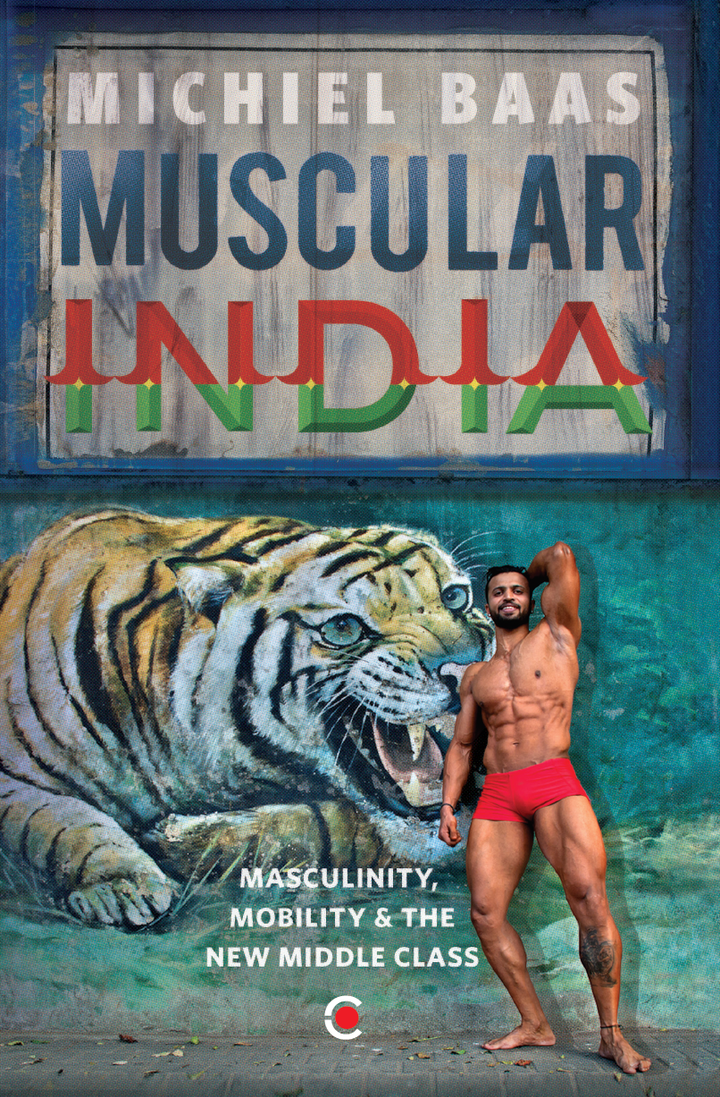
At heart Kishore remains a typical Chembur boy, as he would describe himself, having lived in the same locality of Mumbai all his life. His father arrived from Odisha to join the cotton mills of Parel in the 1970s, working there until the 1980s, when the mills ceased operations. He held various odd jobs and, as long as Kishore can remember, life was characterised by financial precarity. His father’s last earned salary of Rs 7,000 contrasts significantly with the Rs 1 lakh Kishore himself makes as a personal trainer. He describes the home he grew up in as ‘nothing more than a hut’, though the family now lives in a ground-floor apartment on a tree-lined street, which his earnings have paid for.
Kishore completed all of his schooling as well as his B.Com. in Chembur but admits that studying was never his forte. Instead, he was the ‘sporty guy’ in school, the one who excelled at all games. An old classmate of his said he was always ‘running around the neighbourhood’, and that she couldn’t remember a time when he was ‘not working on his muscles’. She and other childhood friends are impressed by how he never let his ‘humble origins’ stand in the way of making something of his life, not just his muscles.
When I met Kishore for the first time, now almost a decade ago, he picked me up on his bike in front of Bandra’s Gold’s Gym and we drove off to Band Stand on the sea-facing promenade. A throng of mainly adolescent men would gather there, eagerly awaiting the rare appearance of Salman Khan on his apartment’s balcony, a ‘tradition’ which would repeat itself every Sunday. Their anticipation was not so much for the actor’s appearance, but about whether or not he would take his shirt off and flex his muscles. Shah Rukh Khan was not known to entertain such fancies in a similar way and usually kept himself secluded in his mansion, just a few hundred metres down the road.
Sitting on the rocks facing the sea, Kishore and I listened to the voices of the crowd bubbling with excitement. He knew from experience that the actor rarely showed himself, and rumour had it he was actually abroad on a movie shoot. Yet the place was important to him, not least because of the influence his hero had had on his own trajectory. Growing up in a working-class environment, schooling was deemed important but earning money and becoming self-reliant even more so. When Kishore was sixteen, an uncle invited him to join his packaging business, a job which helped his family make ends meet but held little promise for the future.
Influenced by Salman Khan’s Pyaar Kiya … Kishore had started working out at a local gym, where he rapidly made a name for himself because of the gains he was making. He soon had a loyal following of enthusiastic local ‘gym rats’ who consulted him on their own gym routines, which led the gym owner to offer Kishore a job. Though it was a poorly equipped gym that catered to a local working-class crowd, it allowed him to make his first forays into the world of fitness. He quickly understood he needed to invest more if he wanted to move up the ladder and turn his passion into a stable source of income.
Kishore realised that working out was becoming more popular among those with ‘more money to spend’ and could lead to employment in gyms in well-heeled neighbourhoods. As he started exploring better career options, the industry itself was becoming more professional as well. Gyms were no longer the working-class places they had once been; they were becoming better equipped and had begun offering a whole array of health-related services. Like Café Coffee Days (‘CCDs’), fashion outlets of American brands such as Levi’s and Nike, and fast-food restaurants, gyms were ‘suddenly’ everywhere, Kishore remembers.
India’s urban landscape has undergone an incontrovertible transformation since the new millennium, with burgeoning spaces of consumption and leisure that specifically target the ever-expanding middle classes. The city permeates the body not just physically through its orifices—the large quantities of air pollution, the skin soaking up dust, arteries clogged with abundantly available cheap snacks, the ever-present danger of dengue and other types of viral diseases—but also mentally and as such socially and culturally. Considering the inherently diffuse nature of Indian urban space, with its constant surge of newcomers, the body has come to be a marker of difference, and almost literally a vessel of social and cultural mobility. As the ever-present body traverses the city, moving in and out of different situations and locations, it carries with it meanings well beyond its immediate physical appeal.
Kishore’s involvement in English language courses in small institutes of variable quality across the city, doing various accreditation courses with fitness training institutes, and the gyms he has been involved with at over time, all add up to a trajectory in which he has not only worked on his body but also the ‘packaging’, so to speak.
His English has improved remarkably since our first conversation at Band Stand. These days, his relative fluency is put to good use on his regular Facebook and Instagram updates, through which he advertises his services and connects with potential clients. In such updates, he portrays a bodily confidence that appeals to potential upper-middle-class clients who seek his guidance in developing their own bodies. In these posts, I have known him to play with a dash of working-class bravura, which also holds a certain appeal (albeit in moderation) to potential clients. This is more difficult to comprehend than the ostensive appeal of his body. His natural exuberance is laced with a harder edge, which some might describe as rowdy or even aggressive. The hint of his working-class upbringing adds to Kishore’s persona as a self-made man, exuding a masculinity defined by survival and overcoming the odds.
It is clear, however, that Kishore’s Chembur appeal is limited to the actual workout sessions. He is aware that his clients will never quite consider him their equal or make him fully part of their private lives. Even though he is doing well as a personal trainer, his salary wouldn’t necessarily permit him to hire himself for the services he renders either. In that sense, his clients belong to a different socioeconomic stratum altogether. But there is more yet to this difference. Kishore’s trajectory from working class into lower-middle-class terrain, from being educated in a vernacular language to having entered the workforce at a young age, is not a pathway his clients would ever consider for themselves or their children. Their education will invariably have been in English, probably at a convent school with a network of similarly positioned people. The kind of sociocultural capital this provides from early on feeds into the less tangible difference between positions within the middle class. Kishore’s upward trajectory is marked by seeking to close an economic gap as well as a social and cultural one.

Excerpted with permission from Muscular India: Masculinity, Mobility and the New Middle Class by Michiel Baas, published by Westland/Context, August 2020.